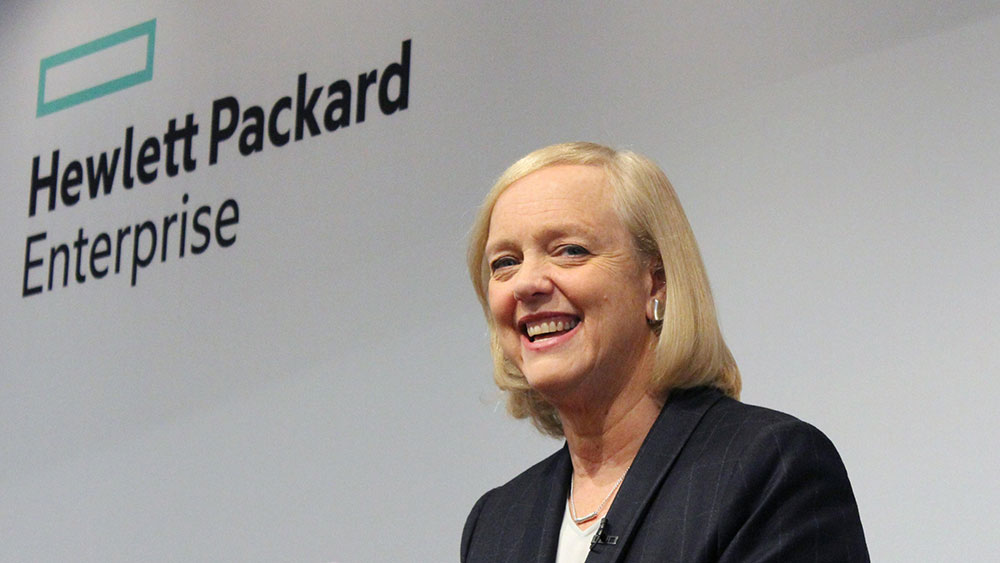HITS

Hewlett Packard Enterprise CEO: Micro Focus Pact Makes Company ‘Even Stronger’
Story Highlights
The plan that Hewlett Packard Enterprise announced Sept. 7, calling for a spin-off and merger of its non-core software assets with U.K. technology company Micro Focus, stands to strengthen Hewlett Packard Enterprise and help make it a more focused company, according to company CEO Meg Whitman.
The deal is valued at about $8.8 billion, including 50.1% ownership of the new combined company by Hewlett Packard Enterprise shareholders and a $2.5 billion cash payment to Hewlett Packard Enterprise, she said on the company’s earnings call for the third quarter, ended July 31. The merger will create “one of the world’s largest pure-play enterprise software companies,” Hewlett Packard Enterprise said in its earnings news release.
The plan, following Hewlett Packard Enterprise’s decision earlier this year to spin off its Enterprise Services Business and merge it with Computer Sciences Corporation (CSC), “accelerates” Hewlett Packard Enterprise’s strategy to become a “faster-growing, higher margin, stronger cash flow company,” Whitman said. Once the CSC and Micro Focus transactions are complete, Hewlett Packard Enterprise “will be an even stronger company, well positioned for the future,” she said on the earnings call. The Hewlett Packard Enterprise software and Micro Focus-merged company is expected to generate annual revenue of about $4.5 billion, she said.
The newly merged company “will be well diversified across product lines and geographies,” and will also have a “stronger go-to-market capability with nearly 4,000 sales people worldwide and deep R&D resources to deliver best-in-class solutions to customers and partners,” she said.
The software assets that will be a part of the spin-merge plan “will bring better value to our customers, employees and shareholders as part of a more focused software company committed to growing these businesses on a standalone basis,” she added. The assets include Hewlett Packard Enterprise’s application delivery management, big data, enterprise security, information management and governance and IT operations management businesses, she said.
Despite spinning off its non-core software assets, software and services remain “key enablers of Hewlett Packard Enterprise’s go-forward strategy,” she told analysts. Hewlett Packard Enterprise’s newly-created Software-Defined and Cloud business “will build upon key software assets like OneView and the Helion cloud platform to deliver software-defined hybrid IT solutions like Synergy,” she said. Hewlett Packard Enterprise’s Technology Services group will represent about 25% of its revenue following the CSC and Micro Focus transactions, she went on to say.
The Hewlett Packard Enterprise Group businesses have also been “simplified and streamlined to better address market opportunities, improve cost structure, accelerate innovation and strengthen our competitiveness,” she said. All business unit and corporate marketing efforts will be consolidated under Hewlett Packard Enterprise’s global marketing function and all sales will be under a single global leader, she said. HP Labs, meanwhile, will move into the Enterprise Group, which will “better align our research and go-to-market efforts,” she said.
Hewlett Packard Enterprise’s total third-quarter revenue fell 6% year-over-year to $12.2 billion. Enterprise Group revenue dropped 8% to $6.5 billion, while Enterprise Services revenue fell 5% to $4.7 billion and Software revenue tumbled 18% to $738 million. The one bright spot was Financial Services, where revenue inched up 1% to $812 million.
“Storage performance was not as strong in Q3 as we saw last quarter, I think, because there was a weaker market,” Whitman told analysts. But she said Hewlett Packard Enterprise also “increased margins” in the quarter and it was the 11th consecutive quarter in which “we’ve taken market share.”
Although there was “more work to do, we are already seeing that our strategy is working,” she said. “As a more focused organization we’ve been better able to allocate resources more effectively and introduce truly best-in-class solutions,” she said.









